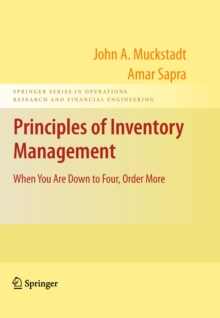
Linear and Integer Programming vs Linear Integration and Counting : A Duality Viewpoint Paperback / softback
by Jean-Bernard Lasserre
Part of the Springer Series in Operations Research and Financial Engineering series
Paperback / softback
Description
Integer programming (IP) is a fascinating topic. Indeed, while linear programming (LP), its c- tinuous analogue, is well understood and extremely ef?cient LP software packages exist, solving an integer program can remain a formidable challenge, even for some small size problems.
For instance, the following small (5-variable) IP problem (called the unbounded knapsack problem) min{213x?1928x?11111x?2345x +9123x} 1 2 3 4 5 s.t. 12223x +12224x +36674x +61119x +85569x = 89643482, 1 2 3 4 5 x ,x ,x ,x ,x?N, 1 2 3 4 5 taken from a list of dif?cult knapsack problems in Aardal and Lenstra [2], is not solved even by hours of computing, using for instance the last version of the ef?cient software package CPLEX.
However,thisisnotabookonintegerprogramming,asverygoodonesonthistopicalreadyexist.
For standard references on the theory and practice of integer programming, the interested reader is referred to, e.g., Nemhauser and Wolsey [113], Schrijver [121], Wolsey [136], and the more recent Bertsimas and Weismantel [21].
On the other hand, this book could provide a complement to the above books as it develops a rather unusual viewpoint.
Information
-
Item not Available
- Format:Paperback / softback
- Pages:168 pages, 4 Tables, black and white; 2 Illustrations, black and white; XIV, 168 p. 2 illus.
- Publisher:Springer-Verlag New York Inc.
- Publication Date:21/10/2010
- Category:
- ISBN:9781441918536
Other Formats
- Hardback from £81.75
- PDF from £76.08
Information
-
Item not Available
- Format:Paperback / softback
- Pages:168 pages, 4 Tables, black and white; 2 Illustrations, black and white; XIV, 168 p. 2 illus.
- Publisher:Springer-Verlag New York Inc.
- Publication Date:21/10/2010
- Category:
- ISBN:9781441918536










